Theo Verelst Local Diary Page 107
This page is copyrighted by me, and may be read and transferred by any
means only as a whole and including the references to me. I
guess that's normal, the writer can chose that of course.
Nov 24, 22:16, 2011
Linux Xilinx IDE webpack 13.2
connected over open source USB driver to spartan 3e-500 board
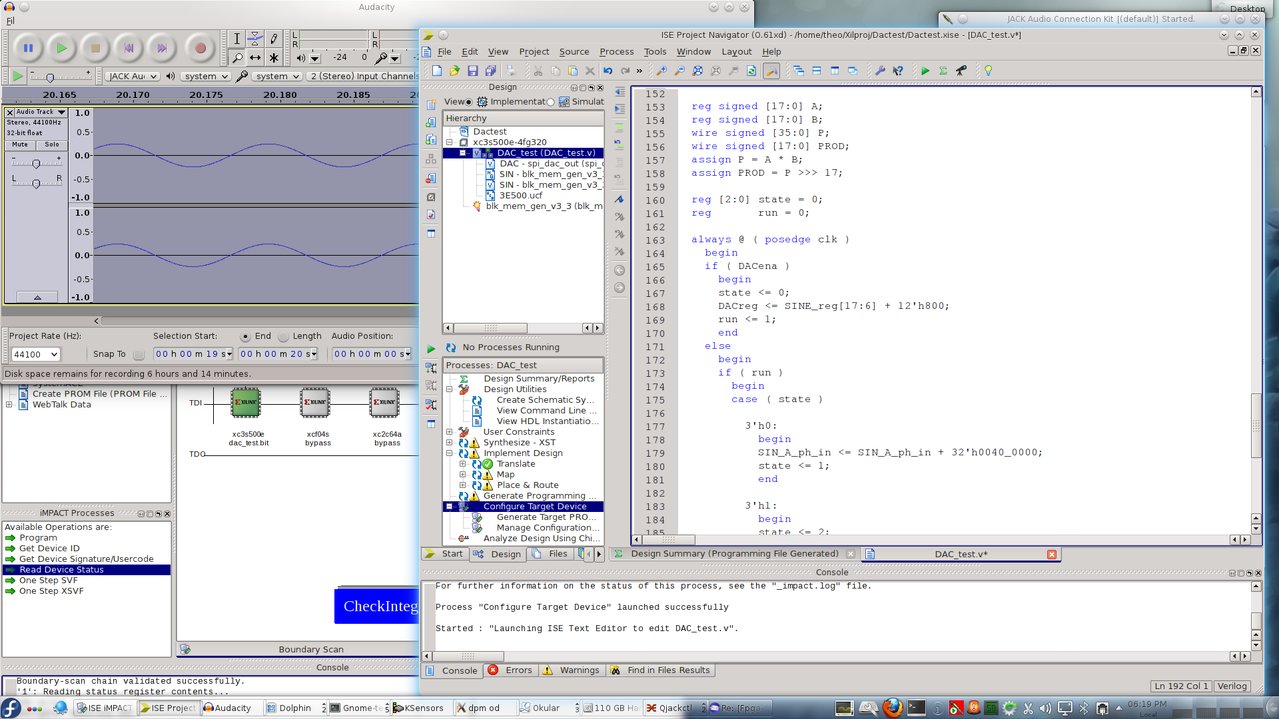
Works great, applause for the developers and the Open Source usb
project.
The Scott Gravenhorst FM-type FPGA audio synthesizer Visual Basic
interface running on Linux using "Mono":

Tryout silicon compile Plasma processor from OpenCores/Steve Roads
Texas Instruments MPS430's connected to Linux
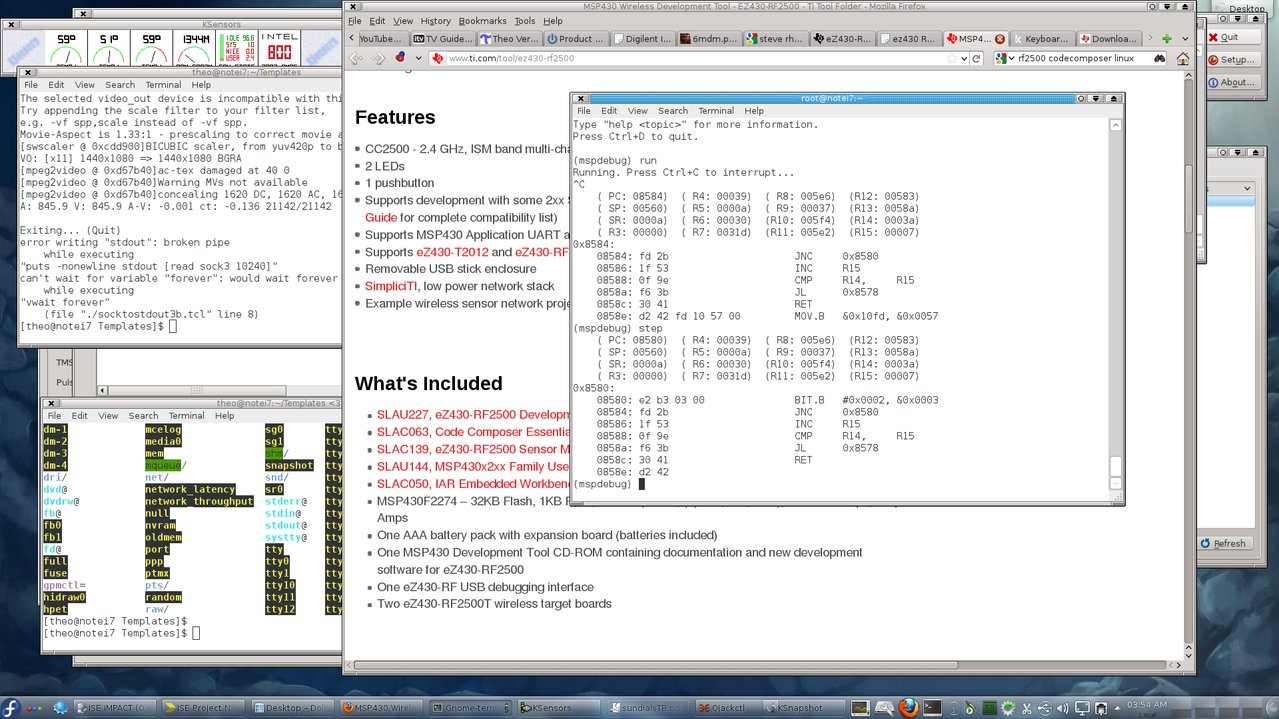
Unfotunately the official Analog Devices DSP IDE for the blackfin 561
board doesn't seem to work on windows 7 :( I don't think there is a
linux version for that board, unless the JTAG interface could be used
(slow).
Nvidia compile of latest Cuda (4.1) examples: works. Scenix: viewer
works self compiled.
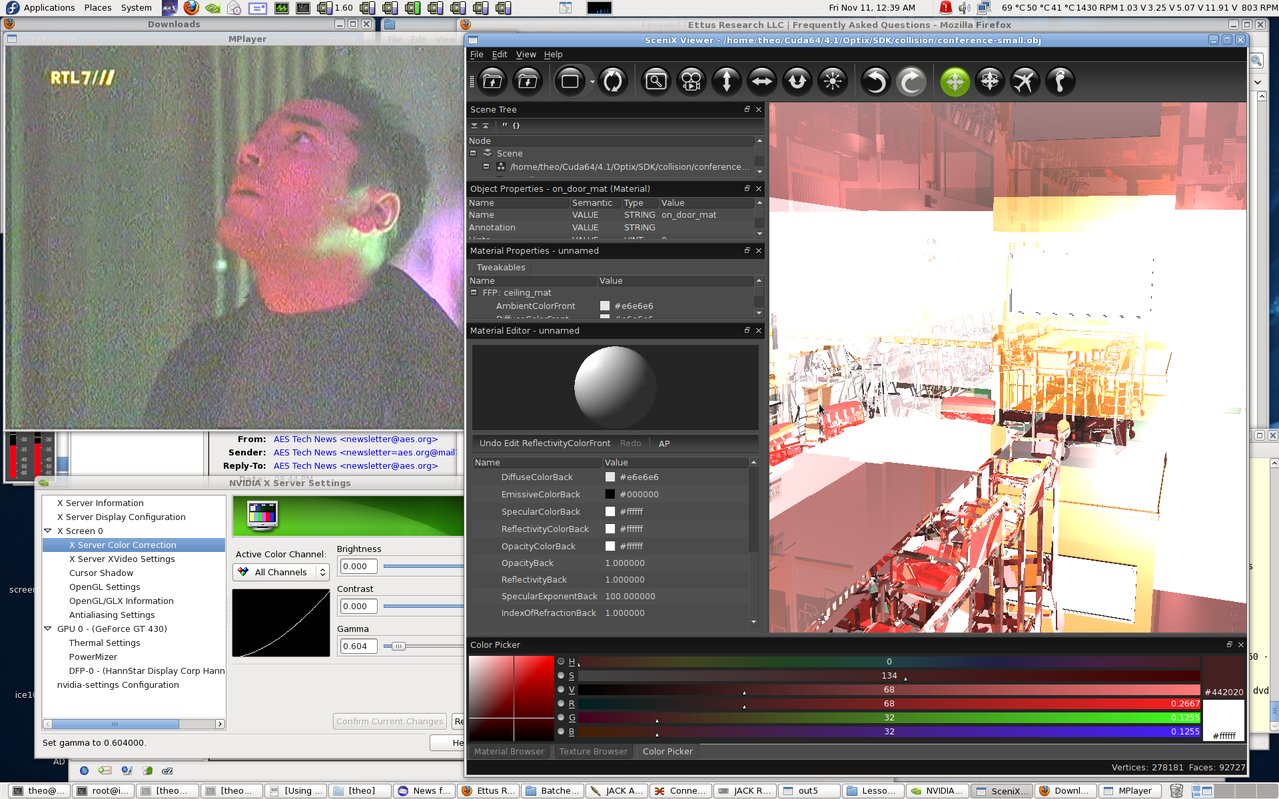
Files can be read somehow back and forth with Equinox3D:

How fast're your I7's, Theo? Uh, "mine" is not completely the whole
truth, but euh, the I7-950 server is amoung the fastest minus the top
(some special new like "2600" and the 6 core expensive I7-985 or so
being
more the normal top) and the sandybirdge notebook is probably still at
the fastest notebook top, exept the graphics card isn't a gaming card
(but does have Fermi Cuda with accelerated double precision floating
point). I just tested the GT430 Zotac (fanless) server graphics card
for speed: about 100 Giga Single -Flops, 20 double Gflops ("nbody"
example Cuda 4.1 examples). I suppose the I7 (when drawing over a 100
Watts) can do about 50 Gflops but I'm not sure and i think it will
depend on core/thread usage, and use of MMX/SSE possibities. Maybe i
should search out how many of those units there are on an I7 and how
many float and integer pipelines there are per core..
Intel did some Teraflop experiment
recently.
New major (digital) electronics
TMS320C6678
Evaluation Module
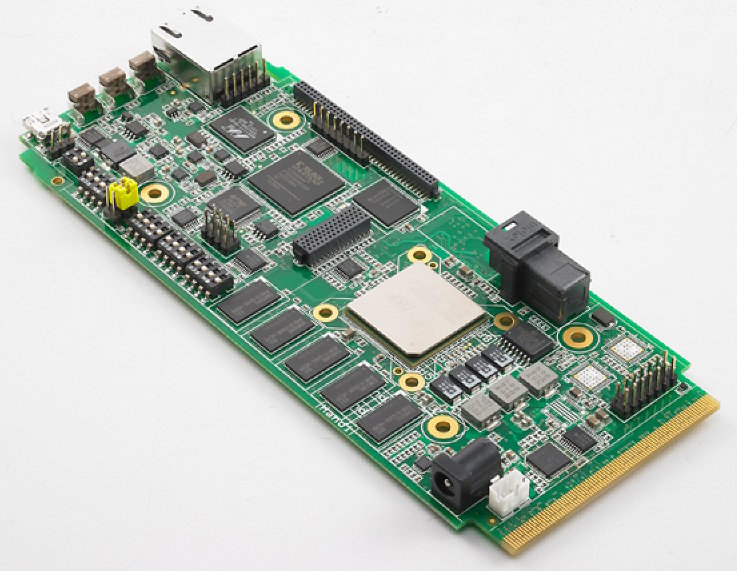
According to specs over 100 Gflops DSP power with 8(!) powerfull 32 bit
DSP
6000
cores, integrated gigaethernet, compilers from Ti and gnu
(with issues but both free) build in web server demo for loading flash
images, built-in usb-jtag debugger, com port, multi processing tools
from TI, even linux. Can work as stand-alon board, and I think it has
generally usable IO, and uses about 5 Watts of power.
All that power costs $399 ( about € 224 ), and would make for a
powerfull 8 voice synthesizer with fast ethernet..
Oh, and there is Linux devsoftware (I'm sure not in expensive rutnkey
industrial reliability form yet, and there are gnu gcc compiler version
issues, grrr..) and there's even a $140 AMC bus converter kit
which lets the card act as PCI-express PC card!
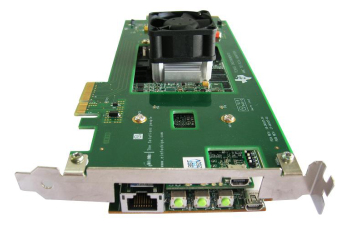
And this, from Taiwan:
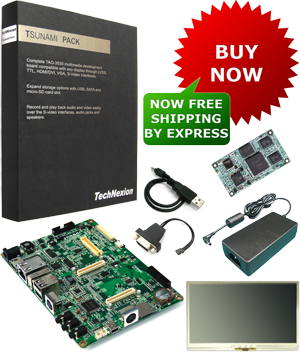
Relatively fast TI OMAP 3530 ARM processor board wiht interface board:
7 inch touch enabled display 800 * 480 pixels, 128 MB ram, 256 MB
flash, wirelss internet, usn, video in + out, and IO connections,
running Linux flavors, aslo from source, through cross compliation on a
host Linux. There ar evaious options with various prices.
Very interesting too (and cheap but maybe just buyable or not even
jet): the Beagle Bone from
TI and Open Source group:
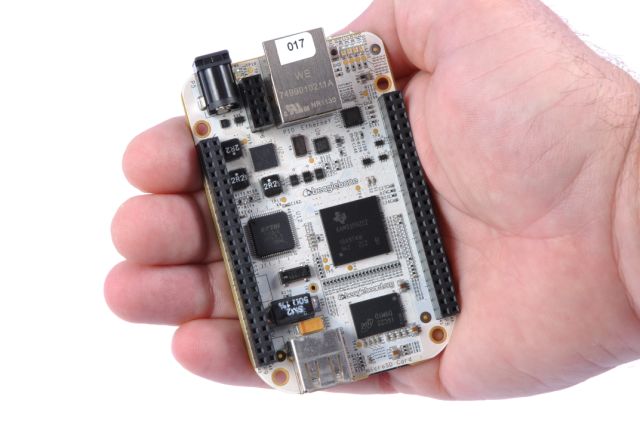
$89 only, comparable machine as the well known Beagleboard, 1500
Mios/Flops TI AM3358 ARM Cortex-A8-based microprocessor, chip-supported
ethernet (as opposed to other beagleboards) 2 GigaByte micro SD, simple
Usb debug + serial IO cable connection, AD converters, etc. Also
there's a jtag debugger from the Usb which I think has a
'standard' jtag connection possibility.
With Angstrom and other Linuxes running on it with ethernnet, some form
of auto-connect web-server application, and a lot of IO pins with
nice 1/10th inch connection, and as it appears a lot of Open
Source software efforts, even live image recognition (fast
ARM-Neon SIMD processing and various manufacturer supplied libraries
like openmax)..
The biggest, generally speaking fastest 28nm chip in the world (like
top gear Jeremy voice?):
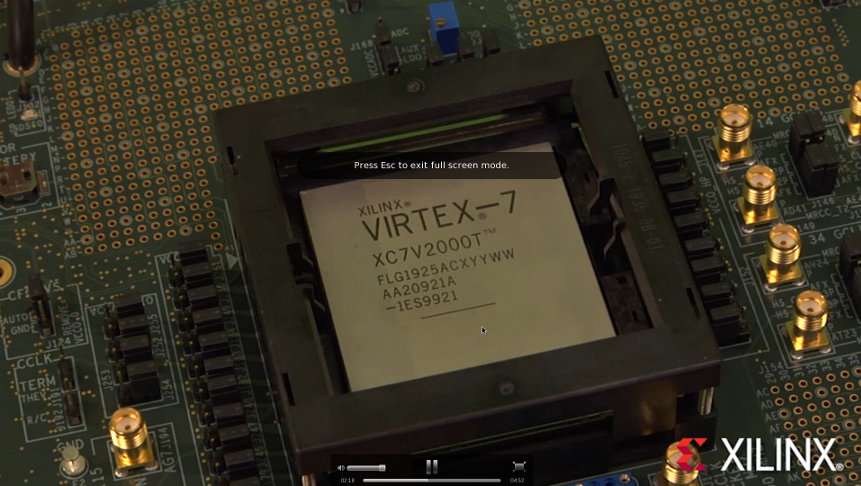
about 4 square inch of fast FPGA silicon from Xilinx. The shown
boards aren't for sale, i think there isn't a develoment kit yet.
The dsp power is supposedly 5Teraops /S which is very much, and the
chip has over 6 billion transistors. Nicest would be a partially
reconfigurable fast PCI express card which can be programmed with the
ISE webpack.
This nice little
board has a strong enough to notice Spartan 6 on it with large
external memories and more than a few DSP slices:

It's only $89 (from AVnet) and comes with a special version of the
software for this board which appearently allows ompiling the
microblaze and ethernet IPs. It has some fast IO pins, integrated
serial IO to the host computer and ethernet, allows running
Linux. "the Spartan-6 LX9
MicroBoard can help you validate your next design idea" Would
there be a possibility to use those DSP slices with the given software
? Oh does the package allow programming more IO on the microblaze or
does it allow compiling linux for it and changing source code ? Grr.
it's always something.
And this probably is nice AD1937eval
board: four in 8 out 192 kHz digital audio codec chip evaluation
board.
The Ettus N200 software radio hardware board sounds cool (expensive
though), according to the website the Xilinx Ise web tools can be used
(the free ones) for programming the FPGA. Also there's a Linux board.
Could be great for a well reconstructing audio DA converter. But a few
hundred bucks with a nice OMAP and freely programmable FPGA is probably
too much to ask for ...

Balanced computer outputs
I use 2 stereo outputs of the 9192kHz Asus motherboard DA converters to
create stereo balanced inputs to the Lexicon Omaga and Lexicon MX400:
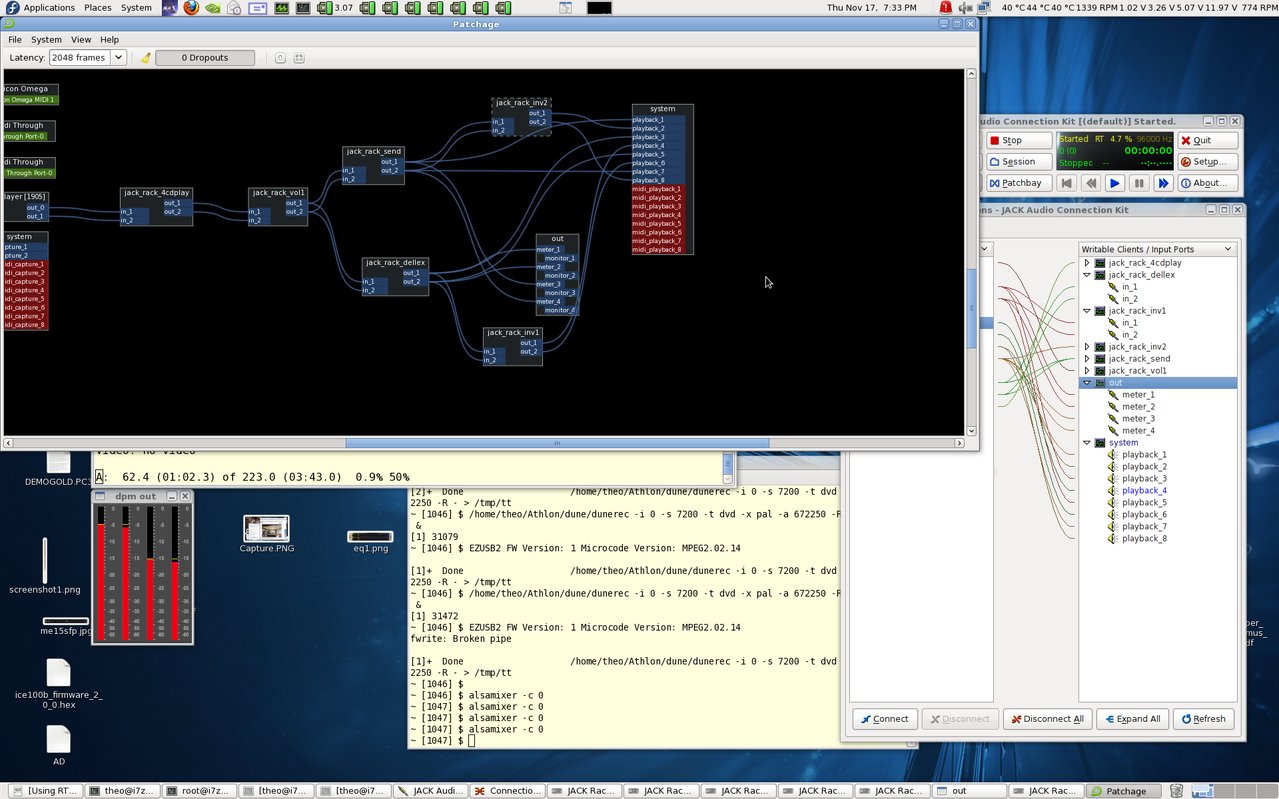
Makes the transients more likable and the low more averaged, and
probably it hums less and is less sensitive to supply variations.
Marvelous sound, a bit boosted for the higher volumes because my preamp
cannot be fully driven by the computer outputs and the Lexicon mixer
allows amplification and pro output levels, and has good specs. The Akg
271 headphones sound good through that all on my preamp output, and at
serious enough (but not bashing) volume the noise when plug-ing it in
is hardly audible.
Cars 2
I rented the new Pixar Bluray which is a nice 3 hour entertainment
quality graphics product with decent audio sound track. Not "the latest
feat" or demo-reel, though it's very good. There is a 3 version (I
don't have facilities for that, I did see a nice Asus screen with
glasses for not too much) and the audio was 7.1 (!) but I didn't get
the extra amp-speaker system in the room for that.












